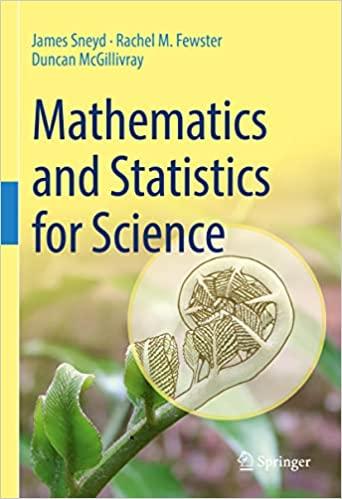The growth of human organs over the first two decades of life sometimes keeps pace with the
Question:
The growth of human organs over the first two decades of life sometimes keeps pace with the overall growth of the body, and sometimes doesn’t. For example, Fig. 6.11 shows some data of human body and organ weight over the first 25 years of growth.
This is an example of allometry, i.e., the study of the relationship between body size and growth or behaviour.
It is clear that the heart and liver continue to grow as the body grows, but the brain does not.
If we plot the data on a log-log plot we get Fig. 6.12. Let B denote relative body weight, and let H and L denote the relative weights of the heart and liver, respectively. It’s a reasonable model to let H = A1B n1 , L = A2B n2 , for some constants A1, A2, n1 and n2. By taking the log10 of both sides, and comparing to the experimental data in Fig. 6.12, find approximate values for A1, A2, n1 and n2.
Step by Step Answer:

Mathematics And Statistics For Science
ISBN: 9783031053177
1st Edition
Authors: James Sneyd, Rachel M. Fewster, Duncan McGillivray





